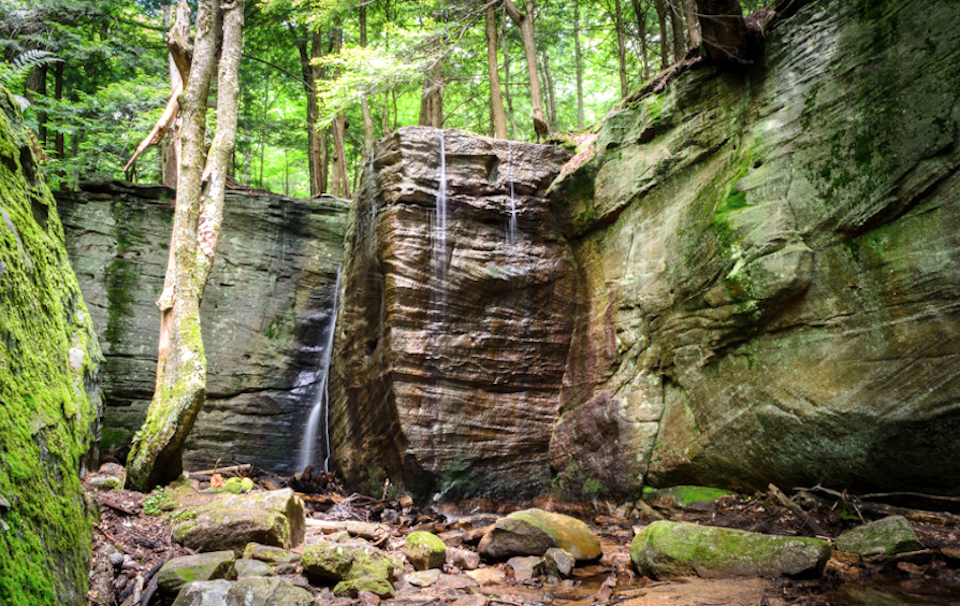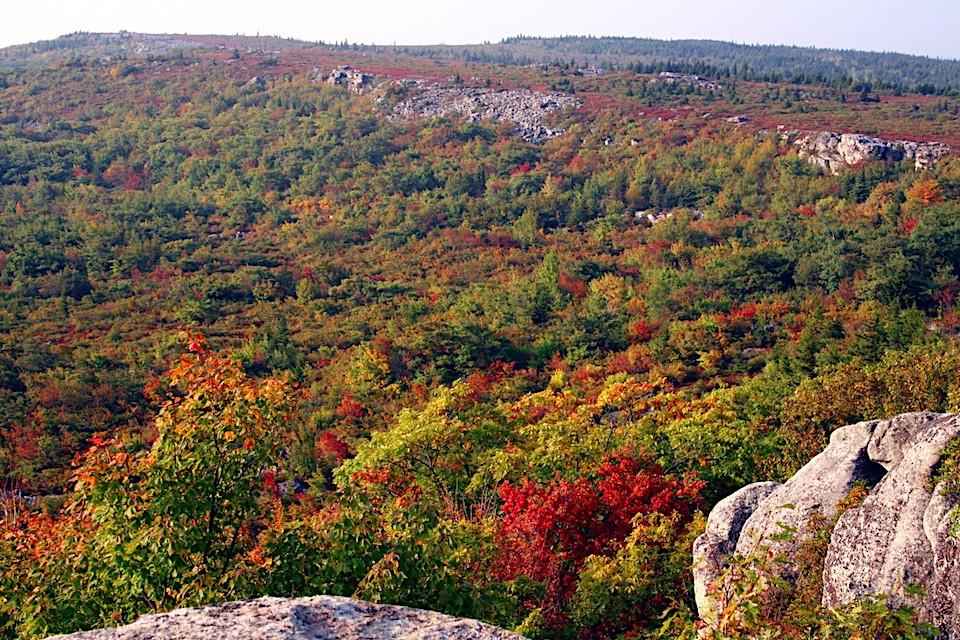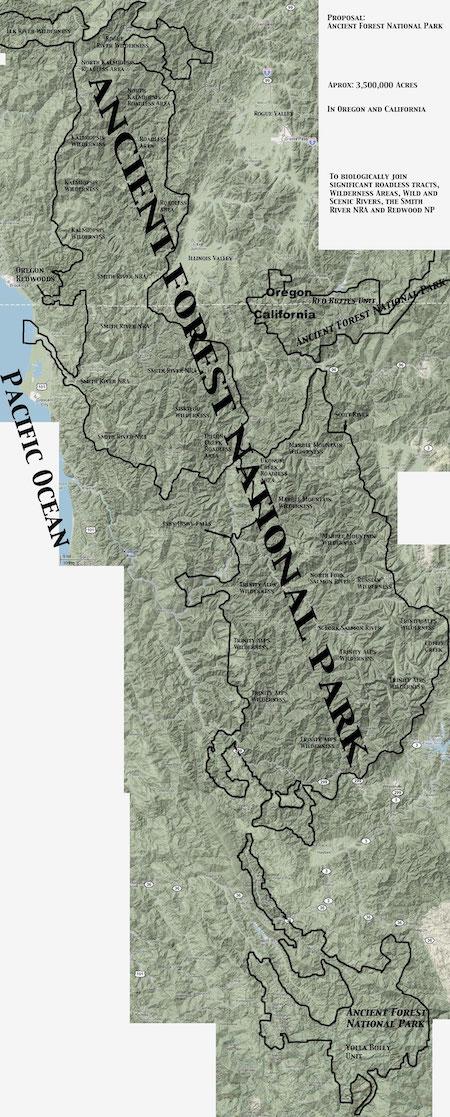
Group wants to see more, many more, national parks.
There are those who either disagree the climate is changing due to human behavior, or that there's nothing that can be done regardless of the driver, as well as those who would love to see more national park lands and those who believe such a move would tie up federal lands from multiple resource activities, such as logging or mining.
Michael Kellett believes more national park lands -- roughly three times the current 85+ million acres in the National Park System -- would help in the battle against climate change, improve biodiversity, and provide Americans with more recreational outlets.
"What national parks do, what they accomplish, is something we need a lot more of," explains Kellett, the executive director of RESTORE: The North Woods, a nonprofit organization that for years campaigned for a multi-million-acre Maine North Woods National Park, who more recently has been lobbying for a greatly expanded system of national parks. "They can store carbon, maintain intact ecosystems, and they can provide green space for people, for public health and well-being, all things that we need a lot more of if we’re going to address the current crises that we’re facing.
“There are other ways that potentially could address some of these problems, but national parks can do all three of those things at once."
While Kellett's drive for a sprawling national park in Maine didn't succeed, it did pave the way for Katahdin Woods and Waters National Monument, which President Obama established in December 2016 with his authority under The Antiquities Act.
Pushing now for a massive expansion of the park system seems beyond possibility. Or does it?
Look around the country, Kellett tells me, and there are literally millions of acres already in the public domain, the kingdom of the country if you will, that could rather easily be slipped into the park system.
"You’ve got places like Yellowstone, where we are talking about bison being shot and hunted, grizzly bears are on the verge of being delisted, wolves are already getting delisted, pronghorn are more and more threatened as they travel between highlands and lowlands," says Kellett. "Yellowstone protects all of these species. It’s when they leave the park that they are in danger. And Yellowstone National Park is surrounded by millions of acres of existing public land where these animals are threatened, so why not expand Yellowstone? Let’s triple the size of Yellowstone to take in all these national forests and BLM lands around the park. That could be done."
There are around the country grassroots efforts to establish "national parks," and not simply by renaming existing units of the National Park System or expanding parks.
There's the High Allegheny National Park and Preserve proposal, which would protect parts of the Monongahela National Forest, along with the Spruce Knob-Seneca Rocks National Recreation Area, the Dolly Sods Wilderness, and the Otter Creek Wilderness in West Virginia. The mountainous, heavily forested, and river-cut landscape is spectacular; I spent quite a bit of time exploring it during my college days and early professional career in West Virginia.

Landscape within the proposed Allegheny National Park/alleghenynationalpark.com
Then there's the Allegheny National Park proposal, which calls for a rural swath of northwestern Pennsylvania and southwestern New York state to be added to the National Park System. Part of the park could come from the Allegheny National Forest, its proponets say.
The Ancient Forest National Park proposal calls for combining parts of Northern California and southern Oregon to "biologically join together wilderness areas, roadless areas, a national recreation area, and wild and scenic rivers into one cohesive land management unit..."
There are other areas, argues Kellett, landscapes of existing federal lands, such as national forests or Bureau of Land Management acreage, that could be added to existing national parks, as well as other federal properties that could be protected as stand-alone units in the park system.
"This is the thing," he tells me. "We’ve got a global emergency in terms of climate change, we’ve got a global emergency in terms of species extinction, and I would argue that we have at least a national emergency in terms of open green space for our population in cities. So why do we think it’s a radical idea to address these problems directly by protecting lands that would help?"
He then proceeds to tick off other locations, places such as the Cascade Range in Oregon and Washington where "there was a recent study done that found that if you protected, at the very least, the most carbon dense forests in the Cascades and the coastal ranges it would have a huge impact on sequestering carbon, yet we continue to log these forests."
"We could expand North Casades National Park, we could create a Mount St. Helen’s National Park that takes in a good chunk of the Gifford Pinchot National Forest, we could create a Mount Hood National Park that takes in the whole national forest," Kellett continues. "And then there was Volcanic Cascades National Park, was proposed by John Muir, basically, originally, and could go from Mount Hood down to Crater Lake or near Crater Lake or the Three Sisters and then expand Crater Lake National Park."
Look to the East Coast and Kellett says Katahdin Woods and Waters could be expanded, that Cape Cod National Seashore could be increased in size and grown to encompass Stellwagen Bank National Marine Sanctuary, and that both the White Mountain National Forest and Green Mountains National Forest could be transformed into national parks.

The Dolly Sods Wilderness Area in West Virginia has been envisioned as part of the proposed High Allegheny National Park/www.forestwander.com
"Then in the center of the country, of course, they’ve been hugely cheated out of national parks," says Kellett. "I’m from Michigan originally, we could create a Three Great Lakes National Park that borders on Lake Huron, Lake Superior, and Lake Michigan. You could create a North Woods National Park that takes in forests in the western Upper Peninsula in northern Wisconsin. ... We could address some of the threats to public lands directly by turning lands that are now open to logging, mining, fracking, whatever, into national parks. That automatically gets rid of that threat. If it’s a national park it’s not going to happen."
Gaining momentum, Kellett points to the Boundary Waters Canoe Area Wilderness, a U.S. Forest Service property, that he believes should be combined with Voyageurs National Park so as to block hard-rock mining and logging; looks to the Southwest, where a Sonoran National Park could encompass existing Organ Pipe Cactus National Monument with neighboring Cabeza Prieta National Wildlife Refuge, and; talks about a multi-unit park protecting the Lower Rio Grande Valley in Texs, where there's another national wildlife refuge.
The trick, of course, is getting the political support for such additions to the park system.

Map of proposed Ancient Forest National Park/ancientforestnationalpark.org
“The only way to expand the National Park System is to get broad public support. And that’s why we think that an omnibus federal bill that lumps a bunch of national parks in one big bill is the way to go, because then you start bringing constituencies from all over the country," Kellett says. "It would be like the Alaska lands act was. It was so big that there was support from every state in the country for that bill. Otherwise, you end up fighting individual state political establishments.
“Education is key, and then getting people to realize we can do something. Because the opponents of protecting land want us all to think there’s nothing we can do, it’s too late, we’re totally overwhelmed, we can’t not drill, and log and graze because our country will collapse," he adds. "That’s what they thrive on, is getting people to think it’s hopeless that there’s nothing that can be done.”
While the National Park Service currently is hamstrung by a maintenance backlog of roughly $12 billion and an annual budget that has been relatively flat in recent memory, Kellett doesn't believe that should be an impediment to protecting more land for the good of the country.
"The amount of money we’re talking about is a tiny sliver of the total federal budget. When it comes down to it, the Congress and the president will do what the public demands they do if there’s enough public support," he maintains. "Here we had this giant tax cut for rich people and corporations; the entire budget for the National Park Service wouldn’t even appear as a dot in the size of that bill. It’s not that we don’t have the money, it’s the politics have not been right.
“I don’t pooh-pooh the reality of that problem, but that’s not an insolvable problem. What we need to do is prioritize protecting these places and these ecosytems and these landscapes, because once theyr’e gone they’re gone. Short-term budgetary problems should not hold us back from giving these areas this protection."
Traveler footnote: Listen to my full interview with Michael Kellett in National Parks Traveler Episode 47.



Comments
I'm a conservationalist and I like this idea with a few caveats.
1. First and foremost Americans must not be locked out of their Public Lands. If Yellowstone or Yosemite or other parks expand into adjacent National Forest and Wilderness Areas then these parks must be Yellostone National Park and Preserve. Hunters, anglers, ATV's, others must not be locked out.
2. Merge US Forest Service into Interior Department with areas appropriate for logging. Hence protect rest of American old growth stands and selective harvest second growth, etc.
3. Remove more dams where appropriate.
So, Joshua Israel, I feel compelled to shed some light on exactly where the part about you being "a conservationalist" comes in? The term "conservationalist" as opposed to "conservationist" is actually most commonly used as extremist rightwing code denoting the twisted far right "poseurs" whose agenda is to insert themselves into and infiltrate genuine conservation discussions in order to spread confusion. I have no way of knowing whether you meant to use the term in this way; but, that's how it is generally used. The particular end of the far right spectrum that coined the term "conservationalist" also tends toward rabid anti-semitism; so, your use of the name "Joshua Israel" would also fit their kind of thing.
As far as your proposal goes, what you're proposing actually looks as much like a camouflaged effort to expand the exploitation of protected lands as it does a genuine proposal to expand their protection. I don't know; but, your proposal really does sound like a "Trojan Horse" kind of deal that wouldn't further true conservation at all. All of that fits the mode of operation of a twisted far right extremist, a few grains of seductive truth mixed into a bigger overall lie, just the way Mein Kampf or the John Birch Society teaches.
Given the tremendous level of political intrigue and corruption that the GOP has been nurturing for decades, there are now so many twisted "poseurs" desparately trying to insert themselves into and infiltrate genuine conservation discussions that I'm afraid I take everything anyone says nowadays with an extra large grain of salt. Perhaps the NPT team should do the same, try to heighten their awareness, and try to recognize and block these folks (no pun intended) as they crop up.
Someone please buy rump some tin foil.
So, ecbuck, do you know this Joshua Israel fellow; how well do you know him; and did I misread or misjudge him? Do you think I misunderstood his proposal? Do you have any further information or insight into his proposal, beliefs, or associations that might help to better explain him, his proposal, his thinking, or his affiliations?
No, I don't know him. But you took what I believe was an inadvertent addition of "al" to convervationist and turned him into an alt-right, swatiska wearing anti-semite purvaying GOP corruption. Could you please tell us who (specifically) has used "conservationalist" as "extremist rightwing code denoting the twisted far right poseurs"? I did a google search on the term and didn't get a single hit. {edit} The google search defaults to "conservationist" Forcing it back to conservationalist, you get one Urban Dictionary definition that makes no sense and a story about Teddy Roosevelt.
First and foremost, I use my full name. I have nothing to hide. Second, I serve in the United States Army, again nothing to hide. Third, I grew up out west in Central Oregon and I have seen the goods and bads of the logging and mining industries. Yes, as a conservationist, I have always believed in proper conservation with proper development. My family has donated to many conservation causes to include the inclusion of Antelope Flats into Grand Teton National Park, and other land preservation causes. I have been in the dirt planting sitka spruce, Douglas Fir, etc to help with increased Salmon runs in the decades to come. Most importanrly, I'm an American as you all are. Our public lands are a gift to us all. I want the parks expanded but traditional uses kept as well. I want more derelict dams torn down across this country while preserving hydro producing dams, flood control, recreation, etc. Do I believe in Climate Change, not really. Our sun has a lot to do with the warming of the planet. Contact me 'Rumpelstilskin' or anyone else. Well have a great conversation on the future of our parks. Im currently based near Grafenwoer, Germany.
Be well and Happy New Years
Joshua Israel
910-709-2109
[email protected]
Perhaps this is he: https://www.researchgate.net/profile/Joshua_Israel
Not everyone feels obligated to hid behind a fictional alias.
Ecbuck, great work, but unfortunately that's not me. I keep a very low social media profile, hence I don't use social media. I comment on NPT because all of us here have a common theme in loving our public lands. Rumple included. I currently serve in the United States Army. I grew up in Central Oregon and I do understand the goods and bads of the extraction industry of timber and mining. I remember the issues with the spotted owl and very interesting people chaining themselves to redwood trees, spiking redwoods, and the like. Kurt Rephanshak is correct we need more parks, but not at the expense of other traditional uses. Final thought, Rump, I forgive you. I'm an actual person, I don't hide behind pseudonym names.
Be blessed this New Years